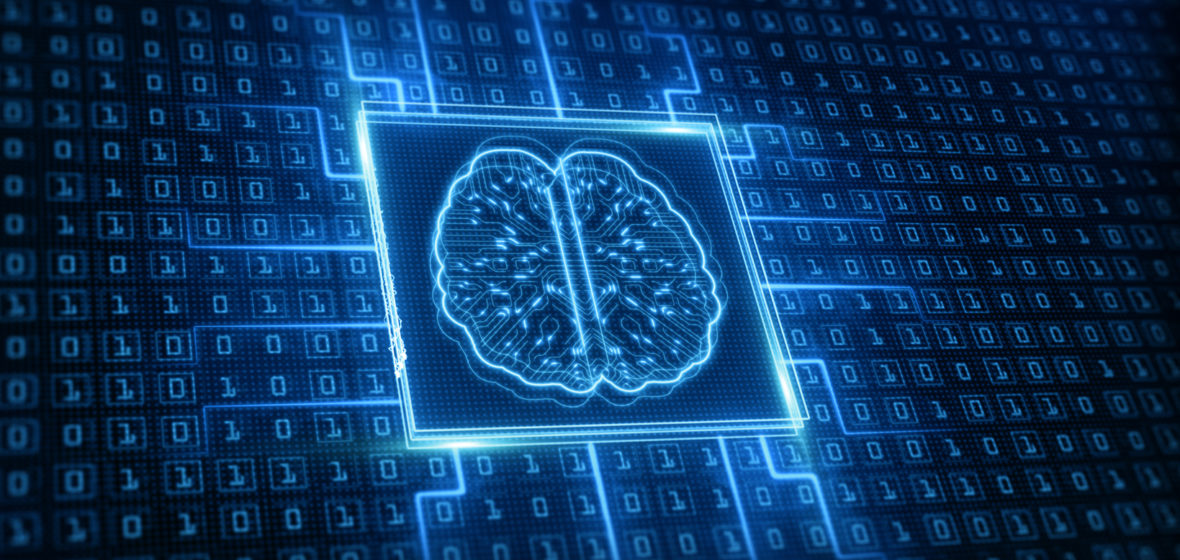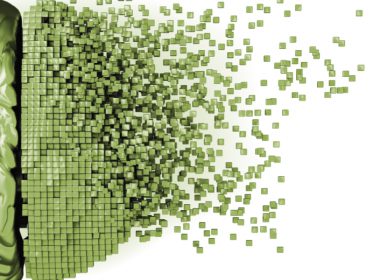Snapshot
- In a decision that has received much media attention, the Federal Court found that an artificial intelligence (AI) system can be an inventor of a patent.
- The Court also held that a non-human inventor cannot be the owner of a patent.
- The availability of patent protection for inventions created by AI is controversial.
- Law reform is required to deal with the ever increasing use of AI systems in a wide range of industries, both nationally and internationally.
In a worldwide, ground-breaking decision of the Federal Court (Thaler v Commissioner of Patents [2021] FCA 879 (‘Thaler’)), it was determined that inventors of patentable inventions do not need to be human. Beach J held that DABUS, an artificial intelligence (‘AI’) system, was the inventor of the subject of the patent application. The Deputy Commissioner of Patents had rejected the application filed by Dr Thaler naming DABUS as the inventor, because the application failed to name a human inventor.
Background
Dr Stephen Thaler is the inventor of the Device for Autonomous Bootstrapping of Unified Sentience (‘DABUS’). At its core, DABUS is software described as ‘an artificial intelligence system that incorporates artificial neural networks’ (at [8]). The invention the subject of the patent application is the output of the processes of the software. While Dr Thaler is the applicant for the patent, he is not the inventor. In addition to being the copyright owner of the DABUS source code, Dr Thaler was acknowledged as the owner and operator of the computer used to operate DABUS.
The judgment in Thaler v Commissioner of Patents
In finding for Dr Thaler, that DABUS can be identified as the inventor of the relevant invention, Beach J’s reasoning followed four lines of thought:
- The Deputy Commissioner’s determination ‘confuses the question of ownership and control of a patentable invention including who can be a patentee, on the one hand, with the question of who can be an inventor…’ (at [12]);
- Precluding the possibility of granting a patent for an invention on the basis that there is no human inventor is unjustified and ‘is the antithesis of the s 2A object’ (at [13]);
- ‘[P]ersisting with the notion that artificial intelligence systems cannot be inventors’ is to read into a statutory definition a limitation or qualification that is at odds with the ‘evident purpose of the Act’ (at [14]);
- The ‘underlying idea’ of what an inventor is depends on the ‘evolving nature of patentable inventions and their creators’ (at [15]).
Beach J considered the use of artificial intelligence in pharmaceutical research (at [44]-[56]) and used that analysis as justification for not taking a narrow view of the concept of ‘inventor’. However, in the examples given, one could be forgiven for understanding the role of artificial intelligence in those examples as powerful tools for the human researchers engaged in drug or vaccine development and not as the ‘inventor’ of the resulting drugs or vaccines.
Statutory provisions
Turning to the statutory provisions, Beach J commenced his inquiry with an analysis of s 15(1) of the Patents Act 1990 (Cth) (‘PA’) noting there is no definition of ‘inventor’:
‘Subject to this Act, a patent for an invention may only be granted to a person who:
- is the inventor; or
- would, on the grant of a patent for the invention, be entitled to have the patent assigned to the person; or
- derives title to the invention from the inventor or a person mentioned in paragraph (b); or
- is the legal representative of a deceased person mentioned in paragraph (a), (b) or (c).’
Clearly, a patent can only be granted to a person and, until such time as an artificial intelligence system can be granted legal personhood, DABUS cannot be granted the patent over an alleged invention. But for completeness, Beach J analysed the meaning of ‘person’ by invoking s 2C(1) of the Acts Interpretation Act 1901 (Cth) which includes reference to ‘a body politic or corporate as well as an individual’ and also considers the extension provided in s 29(5) of the PA, namely, that a ‘person includes a body of persons, whether incorporated or not’. His Honour concludes from that analysis that there is nothing precluding ‘a non-human artificial intelligence device or system’ from being identified as the ‘inventor’ under s 15(1).
Beach J then went on to consider the provisions regarding Patent Cooperation Treaty (‘PCT’) applications. Such applications are international patent applications specifying Australia as a designated State under the PCT. As the patent application is a PCT application, regard must be given to the obligations imposed on the applicant (s 29A(5)(a) PA). The formalities of such an application can be found in reg 3.2C of the Patents Regulations 1991 (Cth) and require that ‘the name of the inventor of the invention to which the application relates’ be provided. Beach J interpreted this requirement as not precluding ‘a non-human artificial intelligence device or system’ as an inventor (at [72]).
Analysis of the Commissioner’s and Dr Thaler’s arguments
After summarising the Deputy Commissioner’s reasons for his determination, and the arguments of the Commissioner and Dr Thaler in the Federal Court, his Honour commenced his analysis with six general observations:
- The PA does not expressly stipulate that an AI system cannot be an ‘inventor’;
- Unlike copyright law, no feature of patent law ‘would drive a construction of the Act as excluding non-human inventors’;
- There being no definition in the Act or Regulations, the word ‘inventor’ would have its ordinary meaning, and being an agent noun, would not require the agent to be human but could describe an AI system that invents;
- As the concept of ‘manner of manufacture’ has developed over time so should the concept of ‘inventor’;
- The construction of the Act should be consistent with the object clause in s 2A of the PA;
- The question of inventive step is what the Act is concerned with, not whether there is or isn’t an inventor.
In regard to the fifth observation, Beach J made the point that ‘the object clause should always be considered when construing the legislation’, thereby rejecting the Deputy Commissioner’s view that it is only relevant when dealing with an ambiguity. Accordingly, the term ‘inventor’ should be construed ‘in a manner that promotes technological innovation and the publication and dissemination of such innovation by rewarding it’ with the grant of a patent ‘irrespective of whether the innovation is made by a human or not’ (at [124]). His Honour recognised that ‘computer inventors and patents on computational inventions could promote disclosure and commercialisation consistently with the s 2A object’ (at [130]). To not accept an AI system as inventor could prevent the alleged invention from attaining patent protection, and consequently, ‘owners of creative computers might choose to protect patentable inventions as trade secrets without any public disclosure’ (at [130]).
[T]he term ‘inventor’ should be construed ‘in a manner that promotes technological innovation and the publication and dissemination of such innovation by rewarding it’ with the grant of a patent ‘irrespective of whether the innovation is made by a human or not’.
In relation to the sixth observation, Beach J explained that ‘[o]ne takes the inventive step, howsoever it arose, and compares it with the prior art base and common general knowledge’ (at [144]). If that step is ‘obvious to a person skilled in the relevant art in the light of the common general knowledge as it existed (whether in or out of the patent area) before the priority date of the relevant claim’ (PA, s 7(2)) then there is no inventive step. This hypothetical construct is not about the inventor nor concerned with the ‘inventor’s mental processes as such’ (at [142]-[144]). Consequently, it is irrelevant to the operation of s 7(2) whether ‘the inventive step is produced by a human or a machine’ (at [144]).
Who is entitled to the grant of a patent?
In dealing with the question of who may be granted a patent, specifically, the operation of s 15(1), Beach J acknowledged this must be a person(s) (at [157]). However, the meaning of ‘person’ in this context goes beyond the human person and would include a corporation. But DABUS is not a corporation, it is an AI system and ‘not relevantly a “person”’ for the purposes of being granted a patent, and can neither own nor legally assign an invention’ (at [158]).
So, does this mean that for a patent to be granted to Dr Thaler, the inventor needs to be a person? That would imply that entitlement to a patent requires the vesting of title to such a patent be in the inventor. Beach J rejected that argument, concluding that Dr Thaler could be granted title to the DABUS invention under either ss 15(1)(b) or 15(1)(c). In relation to being entitled to the patent under s 15(1)(b), his Honour utilised the principles of property law to make his point:
‘Dr Thaler is the owner, programmer and operator of DABUS, the artificial intelligence system that made the invention; in that sense the invention was made for him. On established principles of property law, he is the owner of the invention. In that respect, the ownership of the work of the artificial intelligence system is analogous to ownership of the progeny of animals or the treatment of fruit or crops produced by the labour and expense of the occupier of the land (fructus industrialis), which are treated as chattels with separate existence to the land’ (at [167]).
His Honour concluded from this argument that s 15(1)(b) ‘does not require the existence of an inventor at all’ (at [169]). But surely to use a property law argument lends itself to treating an AI system at least as a tool of Dr Thaler in much the same way that it is a tool in pharmaceutical research, described earlier in the judgment, where Dr Thaler would be treated as the inventor aided by his AI system? Or perhaps this scenario of an autonomous or semi-autonomous machine capable of invention raises the uncomfortable question of sentience.
To counter the Commissioner’s arguments about the need for an assignment from the inventor to satisfy s 15(1)(b), Beach J used the analogy of employer and employee. The inventor, being the employee acting in the course of their duties to the employer, ‘holds his interest as trustee for the employer’ [170]. But that still supposes the inventor is at least a legal person that has an interest and can act as trustee, which an AI system is not. In another scenario, Beach J referred to an arrangement for contract research whereby the employer of the inventor assigns the right to the patent to the contracting party [171]. While the inventor is not a party to such an assignment, on what basis does the employer have the right to assign the patent if not on the basis that the employee inventor ‘holds his interest as trustee for the employer’? The mere existence of an employer/employee relationship is not enough to give the employer ownership of the employee’s inventions but a breach of fiduciary duty maybe enough to create a constructive trust on behalf of the employer (see Victoria University of Technology v Wilson [2004] VSC 33, per Nettle J [104], [149] and [225]).
A more convincing argument is provided by the operation of s 15(1)(c). Beach J noted that means other than by assignment are possible for a person to derive title to an invention (University of British Columbia v Conor Medsystems Inc (2006) 155 FCR 391, per Emmett J at [37]-[39]). This is the case even if the inventor ‘is not a legal person and cannot legally assign the invention’ as is the case of an AI system. The ordinary meaning of ‘derives’ was accepted by the parties to include ‘to receive or obtain from a source or origin, to get, gain or obtain, and emanating or arising from’ (at [179]). Making the argument that possession is the ‘foundation of ownership’ (at [191]) and therefore provides title of ownership without the need for assignment (at [192]), his Honour explained:
‘In my view, Dr Thaler, as the owner and controller of DABUS, would own any inventions made by DABUS, when they came into his possession. In this case, Dr Thaler apparently obtained possession of the invention through and from DABUS. And as a consequence of his possession of the invention, combined with his ownership and control of DABUS, he prima facie obtained title to the invention … That is, there is no need for the inventor ever to have owned the invention, and there is no need for title to be derived by an assignment’ (at [189]).
Accordingly, Beach J’s conclusion as to the operation of ss 15(1)(b) and 15(1)(c) was that a patent can be granted to a legal person for an invention where the inventor is an artificial intelligence system or device. His Honour then went on briefly to consider other provisions in the Act, which referred to the inventor or an inventor’s successor in title and the ability to assign the patent, noting that his interpretation of s 15(1) would apply.
Finally, Beach J addressed the question of whether a valid PCT application had been lodged given that the name of the inventor is required under reg 3.2C(2)(aa) of the Patents Regulations 1991 (Cth). His Honour concluded the Commissioner was incorrect in not accepting DABUS on the basis that it is a non-human inventor (at [222]); that as the Act does not mandate the name of a human inventor the regulation should be read down (at [223]); and, ‘the Deputy Commissioner ought not to have used subordinate legislation to summarily rule out a substantive consideration and examination of Dr Thaler’s application’ (at [224]). But such a conclusion does not abide by the expectations of the PCT and its regulations discussed above, particularly where at least one of the designated states in the application requires the name and details of the person/s who is/are the inventor/s. Perhaps, Dr Thaler should change his patent application to one which is a non-PCT application in order to rely on the interpretation of the PA as this case provides?
In summarising his reasons, Beach J concluded ‘an inventor as recognised under the Act can be an artificial intelligence system or device. But such a non-human inventor can neither be an applicant for a patent nor a grantee of a patent … It is consistent with the Act. And it is consistent with promoting innovation’ (at [226]).
Accordingly, the Deputy Commissioner’s determinations were set aside requiring reconsideration of the patent application in accordance with Beach J’s reasons.
Conclusion
With the exception of the Patent Office in South Africa, patent offices around the globe have determined that DABUS, not being a natural person, cannot be designated the inventor of the inventions the subject of Dr Thaler’s patent applications. For example, the UK, USA, EU have thus far rejected such applications. Appeal decisions in the UK and USA have upheld the determinations of their respective patent offices while the appeal from the EPO decision is still on foot. While this article does not provide a comparison of the differences in legislation between those jurisdictions, the nuances between the various patent regimes identified above are not significant with, perhaps, the exception of the USA where an inventor is required to make an oath or declaration under 35 U.S. Code § 115 as part of the application. Clearly, law reform is required to deal with the ever increasing use of AI systems both at the national and international levels. Meanwhile, will other patent offices be as brave as the patent office in South Africa to grant a patent for an invention that an AI system invented? Only time will tell and in the meantime, the Commissioner of Patents has decided to appeal the decision in Thaler v Commissioner of Patents.





